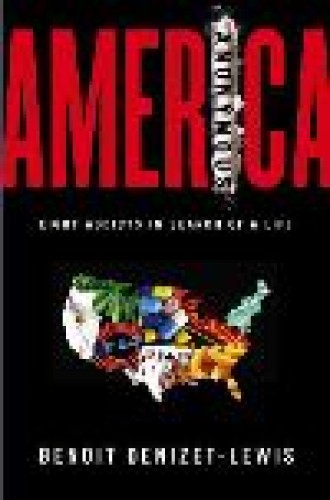Addicted to sex
A certain casualness often overtakes modern conversation about addiction. Here in Oprah nation we’re proud of our semantic acumen, batting around words like withdrawal and detox and always at the ready with “Hi, my name is Bill” jokes.
The trouble, claims Susan Cheever, is that we’ve become so addiction-savvy that we diagnose it everywhere. We’ve started seeing truly life-destroying addictions as just slightly nastier versions of our attachment to iPods or tortilla chips. “‘Addiction’ is the buzzword of the twenty-first century,” writes Cheever, daughter of famed novelist (and alcoholic) John Cheever. “Many of us are addicts, but by overusing the word, we seem to get some kind of mastery over the fact, the way listening to a 911 tape over and over can make it more bearable to hear.”
Cheever’s book is one of two recent titles that offer lively, if disquieting, accounts of American addiction. Cheever writes candidly of her layered sexual infidelities, such as cheating on the man with whom she’s cheating on her husband, and she examines the hazy border between passionate love and destructive obsession. Joining her in documenting the landscape is Benoit Denizet-Lewis, a journalist who followed eight addicts over a three-year period, interviewing them and their loved ones about struggles with drugs, alcohol, shoplifting, sex and food. He creates a vivid collage of denial, relapse, treatment and, in some cases, recovery. Denizet-Lewis himself is a recovering sex addict who reveals that his most serious relapse occurred while he was writing the book.
Before launching into research and interviews, both authors open with confessions: Denizet-Lewis’s is a personal variation of “a day in the life of a sex addict,” and Cheever’s is a narration of her third wedding, which both followed and preceded infidelity. Some readers may sense that they are being positioned as voyeurs from the get-go, a feeling that might return as the authors dip in and out of an agonizing personal narrative. Yet for anyone who works with addicts or their loved ones, wading through the sordid details of the authors’ lives is worth the intimate look at the nature of addiction and provides a hint of what it feels like from the inside.
Cheever’s is the more interior of the two books. Referring to addiction as a “disease of the soul,” she examines her own adulterous affairs in light of emerging literature and research. After looking at the traditional explanations for addiction—genetics, family environment, lack of willpower—she latches on to a newer one that satisfies her better than the others: that the emotional damage that leads to addiction becomes encoded within the human body itself, and that the “body seems to be acting out the mind’s secret pain.” The success of Alcoholics Anonymous, she writes, may lie as much with the fact that AA meetings require something physical from the addict—sitting still and listening to other people’s stories for an hour—as with the psychological or spiritual content of the Twelve Steps themselves.
At times Cheever’s “addiction is held in the body” argument edges toward self-justification—a fact she acknowledges. “Not only does the truthful description of the addictive experience sound phony,” she admits, “it also sounds as if the addict is trying to avoid responsibility.” Cheever talks about the trancelike quality of her sexual forays, the way she “seemed to go into some kind of brownout” and then suddenly, before she knew it, “somehow we were on the bed.” She also seems to take comfort in the fact that recent photographs of the brains of people in love “are almost identical to photographs of the brains of people on drugs,” and draws an extended parallel between the symptoms and behaviors of lovers and alcoholics.
Self-exoneration aside, Cheever makes some helpful suggestions regarding treatment approaches. She proposes that recovery from any addiction needs to include storytelling and community—storytelling because “it’s the shift in the stories we tell ourselves about ourselves that makes change possible,” and community because addiction is characterized by alienation and “a breaking of the social contract.” (Cheever doesn’t mention the church in her book, but it’s hard for a Christian reader not to note that both storytelling and community lie at the heart of congregational life.)
Denizet-Lewis’s account is more sociological than Cheever’s. He looks at macro-level factors such as the intersection of addiction with poverty and race, including the fact that although whites and blacks use drugs at roughly the same rate, ten times as many blacks are imprisoned on drug charges. Taking pains to show the diverse faces of addiction—homemaker, elderly Floridian, urban African-Ameri can grandmother, poor white youth from south Boston—Denizet-Lewis makes the point that “we are a nation of anonymous Twelve Step soldiers in a war against our insatiable appetites.”
The United States has the highest rate of substance abuse of any industrialized nation, and there appears to be something peculiar about the breadth and depth of addictive behavior in this country. While Denizet-Lewis doesn’t hazard a guess as to the reason for the U.S. predilection for addiction, he does put forth some ideas for corporate treatment. Having testified to the power of the Twelve Steps in the recovery of individuals, Denizet-Lewis argues that grassroots civic commitment to eradicating addiction needs to be part of the nation’s recovery plan—that, plus forcing insurance companies to start paying for addiction treatment. Of the 23 million addicts who should have received treatment for drug and alcohol addictions in 2006, he claims, only 2.5 million received it. One of the people he follows, Jody, an addiction counselor and himself a recovering addict, seems to speak for the author: “Where is the massive movement, like we see with other illnesses, demanding that we do something about this problem?” Jody rails. “We’d rather build jails and spend millions of dollars cleaning up the messes of addicts, when we could spend much less and help them stop making messes!”
Perhaps it’s no accident that the addiction books getting the most press focus on addictive sex. Add to these the florid and agonizing memoir by Rachel Resnick, Love Junkie (Bloomsbury, 2008), as well as the media’s fascination with actor David Duchovny, who not long ago checked himself into a treatment center for sex addiction, and one begins to wonder whether sex addiction is to this decade what cocaine addiction was to the 1990s.
Except, of course, that sex is not an illegal substance. This fact only complicates the matter. Both authors claim that sex addiction is paradoxically the most condoned addiction in our country and also the most hidden. Indeed, in a culture in which 84 percent of sitcom episodes have sexual content, many believe there’s no such thing as too much sex. “When I say that sex can ‘take over my life,’” writes Denizet-Lewis, “I don’t get much sympathy.” Embodying that dismissive response is critic Carlin Romano, who grumbles in a recent review in the Chronicle of Higher Education that Cheever’s book is a “party-pooper take on excessive sex.” Breezily labeling sex addiction as that “supposed ailment,” Romano suggests with a wink that reading books like Cheever’s and Denizet-Lewis’s “eats up time you could profitably spend otherwise engaged.”
Few pastors and counselors, having observed the vise grip of infidelity and pornography on parishioners’ and clients’ lives, would be so flippant. While they may disagree on what constitutes addiction and whether Cheever’s or Denizet-Lewis’s behavior is more readily classified as addiction or sin, people who have watched sex-related compulsion wreck lives know its power.
The best description of the contours of addiction comes from Gerald May, author of Addiction and Grace: Love and Spirituality in the Healing of Addictions. “Addiction is the most powerful psychic enemy of humanity’s desire for God,” May writes; it “displaces and supplants God’s love as the source and object of our deepest true desire.” Two decades after publication, Addiction and Grace still towers above the rest of the literature on addiction. Anyone reading the new titles out on the market would do well to keep May’s slim volume at the ready. Cheever’s and Denizet-Lewis’s books are valuable as collages—overlapping snapshots of current thinking and research and behavior—and both authors nod respectfully to spirituality as a key to recovery. But neither plumbs the depths of attachment, addiction, recovery and wholeness as deeply or as comprehensively as May.
Interestingly, unlike Cheever, May is not concerned that frequent use of the word addiction trivializes it. Instead, May writes, “We are all addicts in every sense of the word.” Using the term to describe more humdrum obsessions with work, success and intimacy doesn’t underplay the experience of alcoholics or drug addicts; rather, May claims, addiction accurately describes the way all of us cling to substances or people or feelings or habits. “The psychological, neurological, and spiritual dynamics of full-fledged addiction are actively at work within every human being,” May says. Keeping that fact in mind should help readers to stave off sanctimony when they encounter the graphic struggles in these books.






